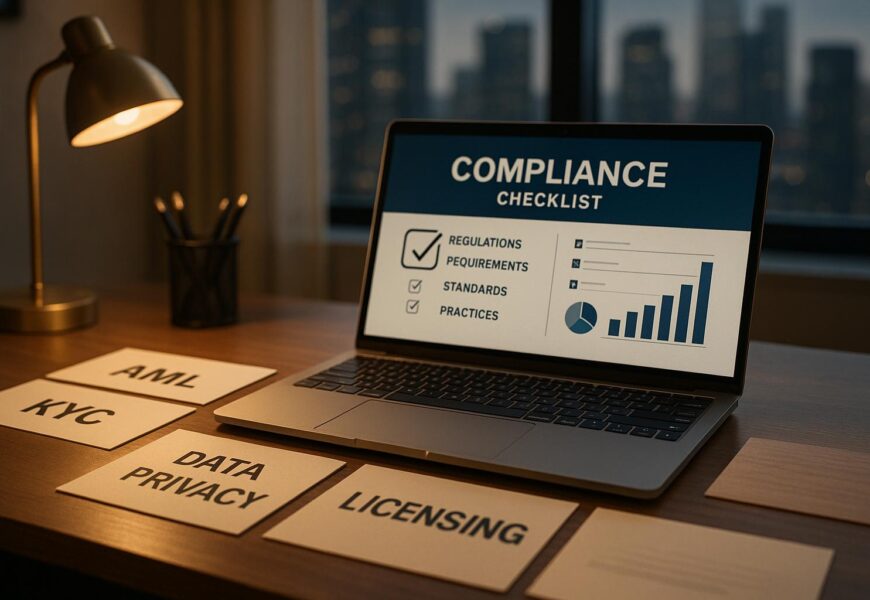Launching a startup is a lot like building a house. You start with a vision, sketch a plan, and then add piece by piece until the structure stands strong. But here’s the catch: no matter how sleek your design looks, if the foundation is weak, the whole thing can crumble.
That’s exactly how AML compliance works. It’s the hidden framework holding your fintech or startup together—keeping regulators, investors, and customers confident in what you’re building.
Here’s how to assemble your AML blueprint step by step.
The Blueprint: Your AML Policy
Every strong build starts with a plan.
- Define how your startup will spot and prevent money laundering.
- Keep it tailored—don’t just borrow a template.
- Cover essentials: risk checks, customer due diligence, monitoring, and reporting.
The Project Manager: Your Compliance Officer
A blueprint is useless without someone to oversee the work.
- Assign a compliance lead—even if it’s a co-founder at first.
- They’ll be the point of contact for regulators.
- They make sure the rules evolve as your startup grows.
The Security Gates: Customer Due Diligence (CDD)
Before anyone enters, check who they are.
- Collect and verify identity documents.
- Run enhanced checks for high-risk customers.
- Use digital KYC tools to streamline the process.
The Alarm System: Transaction Monitoring
Once people are inside, you need constant oversight.
- Flag unusual transactions (large, frequent, or cross-border).
- Automate alerts with startup-friendly monitoring tools.
- Have a clear plan for reviewing and escalating red flags.
The Emergency Protocol: Suspicious Activity Reporting (SAR)
When something doesn’t look right, act fast.
- File reports with FinCEN (in the U.S.) within 30 days.
- Stick to facts—no opinions.
- Keep it confidential; never tip off customers.
The Filing Cabinet: Recordkeeping
Every build need documentation.
- Keep customer files, monitoring logs, and reports.
- Store securely but ensure access during audits.
- Retain records for at least 5 years.
The Toolbox: Training Your Team
Even the best-designed house falls apart if the crew isn’t trained.
- Teach staff to recognize red flags.
- Use real-world examples, not just slides.
- Refresh training regularly as risks evolve.
The Maintenance Check: Risk Assessments
A building isn’t “done”—it needs regular inspections.
- Review risks at least once a year.
- Update when you launch new products or enter new markets.
The Watchtower: Sanctions Screening
Always check who you’re dealing with globally.
- Screen customers and partners against sanctions lists (e.g., OFAC).
- Automate checks where possible.
- Document false positives and decisions.
The Finished Structure: Why This Matters
Here’s the truth: a house built without a strong foundation might look fine—until the first storm hits. For startups, that storm is regulatory scrutiny, investor due diligence, or suspicious activity slipping through the cracks.
By building AML into your startup’s blueprint, you’re not just staying compliant. You’re creating something solid—something investors trust, regulators respect, and customers feel safe using.
Because in the end, the strongest startups aren’t the ones that move fastest—they’re the ones built to last.








